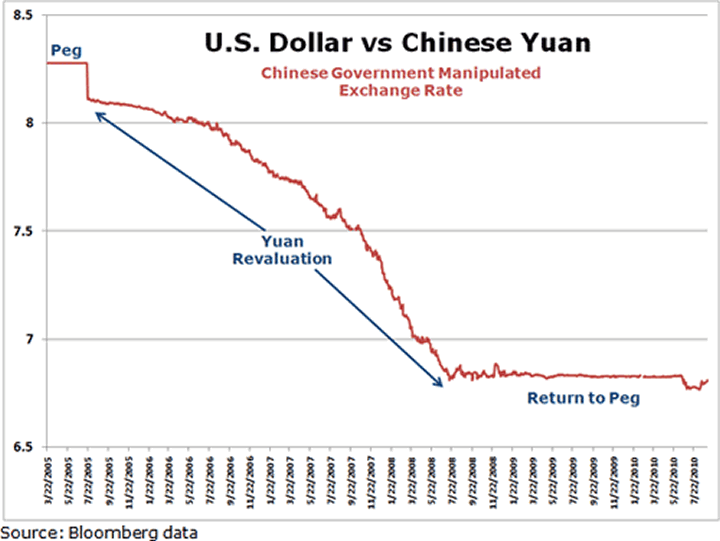Results 1 to 1 of 1
Thread: China Knows the Fate of the Euro
Thread Information
Users Browsing this Thread
There are currently 1 users browsing this thread. (0 members and 1 guests)
-
09-06-2010, 02:34 AM #1Senior Member


- Join Date
- May 2007
- Location
- South West Florida (Behind friendly lines but still in Occupied Territory)
- Posts
- 117,696
China Knows the Fate of the Euro
China Knows the Fate of the Euro
Currencies / Euro
Sep 05, 2010 - 05:41 AM
By: Bryan_Rich
This week, the U.S. Commerce Department gave China another pass on its currency manipulation, ruling against charges it was undercutting U.S. aluminum makers.
This puts Chinaâs currency back on the radar for the politicians and others who, last June, were coaxed into thinking that China was making concessions on its weak currency policy. Thatâs when China announced they would be de-pegging the value of the yuan from the U.S. dollar.
But all of the bad interpretations surrounding Chinaâs move off of the dollar peg this summer clearly show how confused financial market participants are on this issue â¦
The mainstream opinion is that China folded to the pressures from the rest of the world. That it opened the door to a big yuan revaluation, which would ultimately allow the currency to appreciate to the marketâs estimate of fair value against the dollar.
Thatâs roughly 40 percent higher than current levels â a move that would go a long way in helping rebalance the global economy, which would be good for long-term global economic stability and growth.
However, that would entail China slowing its own economy at a time when world economies are vulnerable, all for the benefit of others. Not likely.
Instead â¦
History Is a Good Guide for Chinaâs Likely Course of Action
History shows us that China will continue to act in its own best interest by maintaining trade advantages. This, in turn, will allow the country to keep employing more of its billion-plus citizens, gathering global capital, and boosting its global economic prowess.
Just take a look at the recent history â¦
The chart below is the government-manipulated exchange rate of the U.S. dollar against the Chinese yuan. A fall in the exchange rate reflects a stronger yuan. You can see where China abandoned the peg against the dollar in 2005 (the red line) under the pressure of tariff threats by U.S. Congress.
Initially the Chinese government allowed the yuan to appreciate by 2.1 percent. In total, over the course of the next three years, the yuan gradually climbed another 15 percent against the dollar.

But you can also see in this chart, in late 2008 when the financial crisis was at its peak, China went back to a peg against the dollar (where the red line in the chart starts moving horizontally), which benefited them in two distinct ways â¦
It ensured that its most important consumer, the United States, would maintain its purchasing power, even as the U.S. dollar was retreating during much of 2009. And,
Because of the dollarâs weakness, it created an even greater cost advantage in the global markets for China against its other Asian trading partners, whose currencies climbed sharply last year.
Now, after nearly two years of pegging their currency to the dollar, the Chinese are once again allowing some âflexibilityâJoin our efforts to Secure America's Borders and End Illegal Immigration by Joining ALIPAC's E-Mail Alerts network (CLICK HERE)


 LinkBack URL
LinkBack URL About LinkBacks
About LinkBacks




 Reply With Quote
Reply With Quote

Thank you! We are ready to roll.
05-01-2024, 02:07 PM in illegal immigration Announcements